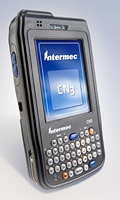Mobile everywhere? too expensive, ROI needs careful assessment


While Anthony concedes that in time, ABi devices may take their place, Windows Mobile powered ruggedised device are what business is using for many field sales and service scenarios. It comes at a price point that has to change.
Anthony says that in the deals he sees, the minimum number of users needed to make these solutions viable is 10. He figures that will cost around $55,000 in year one once all discounts have been applied. This works out as: $1,500 per device for hardware, $1,500 per user for software and services plus $20,000 for implementation. Eye watering? I thought so.
But then he cited the case study of Fossil, the company that sells trendy watches and leather goods. In that case, the company was able to reduce back orders by $350,000 and standing stock by 10% within the first six months of deployment. As the saying goes however, one company's success is not a guarantee of replication elsewhere. It may be a good indicator but each company must evaluate ROI for itself. However, companies can accelerate adoption through appropriate compensation plans.
"We saw one case where sales people were reluctant to use the device until they saw how their peers were benefitting from increased commissions. It went like this. They'd tip up at a store with the idea of selling say 20 units of an orange faced clock only to find there are five in stock. They'd sell those five, then cross sell say 15 yellow face clocks that are in stock. Previously, they'd have had to put the 15 orange clocks on back order since they had no visibility into alternatives. Or, they'd have to break the sales pitch to call up and find if there are alternatives. Either way it was inefficient. Because sales get paid on what they sell, not what's on order, their commission improved."
More generally, Anthony believes customers should see payback within 18 months. That's too long. It needs to be six to nine months. He then went to on to say that once you get to 100 users, software comes in at around $500 per user and discounts will shave more points off the hardware but not so much while implementation will remain much the same. So the best case scenario at those levels is going to be around the $1,700 mark. Still too high when you can get an ABi device 'free' on subsidised networks but for which you might need to pay $200 in order to ruggedise them plus say another $100 for necessary add ons. That would get us back to something around $1,000. More like it though I'd personally like to see a price point nearer the $500-600 mark.That would make the buy decision much easier with the obvious ROI implications.
I argued that current pricing discriminates against the smaller retailer and that surely ABi devices must be able to compete. Yes and no. In many application scenarios, the ability to scan packages is a major selling point for devices from the likes of Intermec, the device Epicor used to showcase its end to end process solutions. "iPhone can't compete, it's just not fast enough, even with the barcode add on device. Plus it is relatively fragile compared to ruggedised devices," said Anthony. And then there is the small matter of volume driving price.
I went to the AT&T site and while you can find some information about ruggedised devices and mention of pricing plans, the available information is way too vague for decision makers. The concentrated effort is on the consumer or Blackberry crowd, as you'd expect.
I argued that even though many of us hate the notion of bundling, there is a good argument for negotiated bundles as part of a way to accelerate adoption and drive volume usage. Anthony agreed but does not necessarily see a role for software companies like Epicor or Microsoft in encouraging carriers to adjust their business models and marketing effort. I disagree. Add SAP into the mix as the latest company to make noises in the mobile space and you have the germ of an industry consortium that could apply pressure for the benefit of customers. And if Oracle plus IBM came on board in my hypothetical cartel then you've got an industry with clout.
One scenario where iPad could make a big play: "I saw this immaculate Mercedes van where three sides were decked out with well organised parts shelves and work bench. The fourth side contained six meters of product manuals that are updated every half year. We went to the company and suggested they install iPads with those same manuals available as part of the mobile solution. The instant reaction to these proposals is always the same. A sharp intake of breath followed by 'We can't afford it.' This is the point where you've really got to do your sums and demonstrate that cost of paper, potential inaccuracy and the almost zero cost of accessing an already digitised resource makes this a no brainer. Add in the fact that you've now freed up over a third of available van space for products and you've got a solid business case."